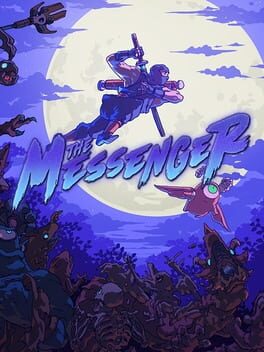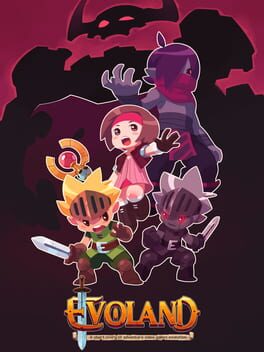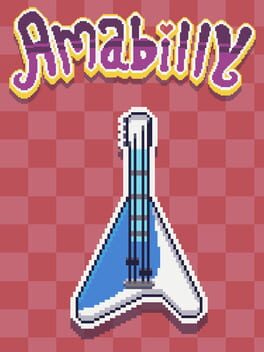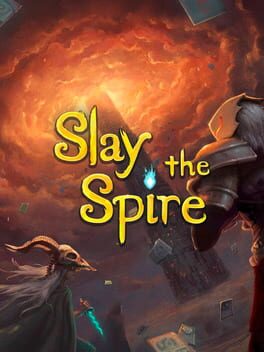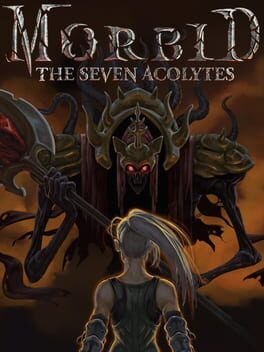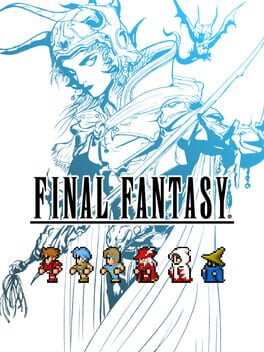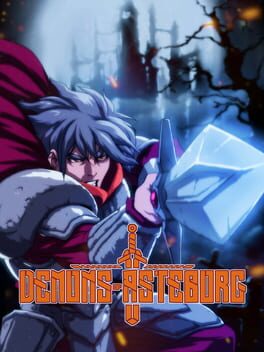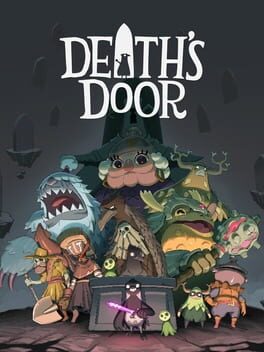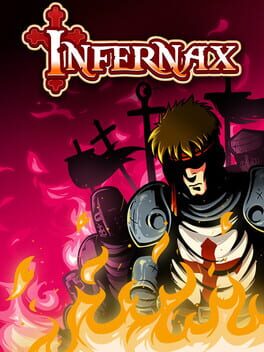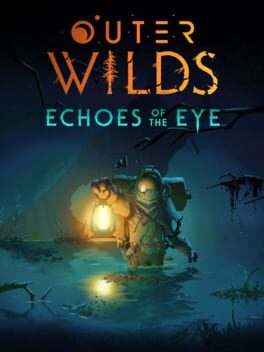AlexTheGerman
2023
As the original Super Mario RPG was never released in Europe, I was one of those unhappy few who only learned about this game in the pages of the German Club Nintendo magazine. Now, almost 30 years later, my story with this game has finally come full circle.
Pros:
+ the graphic presentation has been faithfully and beautifully updated
+ characters are animated with lots of lovingly detail
+ newly added cutscenes are creative and charming
+ the writing is funny and irreverant throughout
+ the premise does not follow the usual chlichés of Mario games
+ the action combat system is timeless
+ every weapon type and special attack has its own action window
+ RPG elements are straight to the point and newcomer-friendly
+ party members can be swapped on the fly during battles
+ available party roster is singular in Mario games
+ enemies are visible on the map and can be avoided
+ items are actually useful and can greatly affect battles
+ fast travel is extensive and available from the menu
+ a lot of secret areas, items and gameplay features to uncover
+ post-game bosses are tough and require unique strategies
+ the music tracks have been caringly remastered...
Cons:
- ... but there are not specific boss or enemy themes
- the general difficulty is far too low
- not all party members meaningfully take part in the story
- how to progress is not always apparent, even with a hint character available
- characters will have learned all their special moves by the mid-way point
- not all characters have a full range of special attacks
- flaws in the combat logic: sleeping characters can defend...
- ...and splash damage seems to be randomized
- the combo counter is reset even while using the defend move
- items cannot be used from the options menu
- mini games are a bit too frequent and differ widely in quality
- dialogue scenes tend to drag on a bit
- even with the appropriate accessoir, finding hidden treasure is tedious
- the antagonist is mostly absent from the story...
- ...and the final fight is a real disappointment
- the technical performance takes a toll in more populated areas
Playtime: 20 hours with 99% completion, all optional bosses beaten and items acquired. That one percent is missing because I have zero interest in collecting the entire bestiary for a meaningless statistic.
Magic Moments: The "make Mario jump" running gag. Finding the Yoshi island and various easter eggs. The musical references to that one Square franchise in one specific boss fight.
Blagic Moment: Having to redo one of the complex, optional boss fights because of a few missed action commands towards the end.
Verdict:
Super Mario RPG is a strange yet fascinating RPG that, while having been updated in various ways for its current release, still feels idiosynchratic in lots of different ways. The non-existent storyline puts together an unlikely character roster that has Bowser and Mario fighting on the same side. The action combat system, while intuitive and engaging, renders most of the early, more difficult fights hectic and the uneven difficulty curve turns the later halve into a cake walk. The mini-games oscilate between tedious and simply unfun, and the pacing suffers as a consequence.
But despite these criticisms, the series' usual charm is all here, with a script that is frequently self-effacing and a beatifully presented world that holds many secrets to explore, and finally experiencing the roots of this particular genre of Mario games is a worthwhile endeavor that I would recommend.
Pros:
+ the graphic presentation has been faithfully and beautifully updated
+ characters are animated with lots of lovingly detail
+ newly added cutscenes are creative and charming
+ the writing is funny and irreverant throughout
+ the premise does not follow the usual chlichés of Mario games
+ the action combat system is timeless
+ every weapon type and special attack has its own action window
+ RPG elements are straight to the point and newcomer-friendly
+ party members can be swapped on the fly during battles
+ available party roster is singular in Mario games
+ enemies are visible on the map and can be avoided
+ items are actually useful and can greatly affect battles
+ fast travel is extensive and available from the menu
+ a lot of secret areas, items and gameplay features to uncover
+ post-game bosses are tough and require unique strategies
+ the music tracks have been caringly remastered...
Cons:
- ... but there are not specific boss or enemy themes
- the general difficulty is far too low
- not all party members meaningfully take part in the story
- how to progress is not always apparent, even with a hint character available
- characters will have learned all their special moves by the mid-way point
- not all characters have a full range of special attacks
- flaws in the combat logic: sleeping characters can defend...
- ...and splash damage seems to be randomized
- the combo counter is reset even while using the defend move
- items cannot be used from the options menu
- mini games are a bit too frequent and differ widely in quality
- dialogue scenes tend to drag on a bit
- even with the appropriate accessoir, finding hidden treasure is tedious
- the antagonist is mostly absent from the story...
- ...and the final fight is a real disappointment
- the technical performance takes a toll in more populated areas
Playtime: 20 hours with 99% completion, all optional bosses beaten and items acquired. That one percent is missing because I have zero interest in collecting the entire bestiary for a meaningless statistic.
Magic Moments: The "make Mario jump" running gag. Finding the Yoshi island and various easter eggs. The musical references to that one Square franchise in one specific boss fight.
Blagic Moment: Having to redo one of the complex, optional boss fights because of a few missed action commands towards the end.
Verdict:
Super Mario RPG is a strange yet fascinating RPG that, while having been updated in various ways for its current release, still feels idiosynchratic in lots of different ways. The non-existent storyline puts together an unlikely character roster that has Bowser and Mario fighting on the same side. The action combat system, while intuitive and engaging, renders most of the early, more difficult fights hectic and the uneven difficulty curve turns the later halve into a cake walk. The mini-games oscilate between tedious and simply unfun, and the pacing suffers as a consequence.
But despite these criticisms, the series' usual charm is all here, with a script that is frequently self-effacing and a beatifully presented world that holds many secrets to explore, and finally experiencing the roots of this particular genre of Mario games is a worthwhile endeavor that I would recommend.
2018
A good game with major flaws. The controls and look are perfect. The first part is much better than the second. The backtracking due to the missing fast travel system is exhausting. The soundtrack gets grating after a while. The dialogue is perhaps a bit too smart for its own good.
Play it, but don't replay it.
Play it, but don't replay it.
Pros:
+ a competent homage to classic 2D Zeldas
+ Lily is a memorable protagonist
+ colorful art style and impressive particle effects
+ a large overworld with lots of optional challenges
+ combat is snappy and satisfying
+ progress and pacing are swift and concise
+ difficulty curve is moderate enough
+ movement speed is quick enough
+ writing is quiant and flowery
+ meta-narrative elements offer surprising options...
Cons:
- ...but sadly appear to rarely
- item management is a bit cumbersome
- most NPCs have nothing interesting to say
- health replenishment system is a bit wonky
- the general design doesn't evolve much from the Zelda formula
- very little post-game content
Magic Moment: Chosing what enemies to fight on the overworld for the first time.
Playtime: 9 hours with most of the map explored and 13 hearts collected.
Verdict:
Blossom Tales is a competently made homage to the classic 2D Zeldas. It emulates the combat, overworld design, and exploratory nature of its forbearers well, but offers little in terms of innovation. While the meta-narrative is a unique twist, the different routes offered in specific situations only rarely affect the gameplay. Still, the colorful art style and flowery writing help in giving the game a distinct identity, and anyone interested in re-exploring the concise, streamlined action adventures of the 16-bit era will find plenty to enjoy here.
Play it and then play the sequel.
+ a competent homage to classic 2D Zeldas
+ Lily is a memorable protagonist
+ colorful art style and impressive particle effects
+ a large overworld with lots of optional challenges
+ combat is snappy and satisfying
+ progress and pacing are swift and concise
+ difficulty curve is moderate enough
+ movement speed is quick enough
+ writing is quiant and flowery
+ meta-narrative elements offer surprising options...
Cons:
- ...but sadly appear to rarely
- item management is a bit cumbersome
- most NPCs have nothing interesting to say
- health replenishment system is a bit wonky
- the general design doesn't evolve much from the Zelda formula
- very little post-game content
Magic Moment: Chosing what enemies to fight on the overworld for the first time.
Playtime: 9 hours with most of the map explored and 13 hearts collected.
Verdict:
Blossom Tales is a competently made homage to the classic 2D Zeldas. It emulates the combat, overworld design, and exploratory nature of its forbearers well, but offers little in terms of innovation. While the meta-narrative is a unique twist, the different routes offered in specific situations only rarely affect the gameplay. Still, the colorful art style and flowery writing help in giving the game a distinct identity, and anyone interested in re-exploring the concise, streamlined action adventures of the 16-bit era will find plenty to enjoy here.
Play it and then play the sequel.
2013
What started as an entry into the venerable Ludum Dare contest turned into a nice and sweet, if somewhat slight manifestation of the idea of playing through the history of a genre in a single game.
Pros:
+ cute central idea that pays tribute to the RPG genre
+ chests serving more gameplay options is a good idea
+ controls and action sequences in 2D work well enough
+ music and sound effects feature classic 2D RPG styles
+ the card game is fun (and stolen from FF8)
Cons:
- the 3D gameplay is rough and unpolished
- collectibles do not serve any function
- the plot is as barebones as they come
- the final boss is terrible and badly designed
Playtime: 2 hours, with only a few collectibles acquired. Played as part of the Evoland Legendary Edition.
Magic Moments: The first change in perspective. Playing the card game and recognizing it from somewhere.
Verdict:
Even though the final 3D gameplay falls short compared to the early sequences, Evoland is clearly a labour of love. As part of the Legendary Edition, this is a recommended for fans of the modern RPG. However, players that are not interested in the history of the genre and do not care about reliving it in a quick play session can safely skip this.
Pros:
+ cute central idea that pays tribute to the RPG genre
+ chests serving more gameplay options is a good idea
+ controls and action sequences in 2D work well enough
+ music and sound effects feature classic 2D RPG styles
+ the card game is fun (and stolen from FF8)
Cons:
- the 3D gameplay is rough and unpolished
- collectibles do not serve any function
- the plot is as barebones as they come
- the final boss is terrible and badly designed
Playtime: 2 hours, with only a few collectibles acquired. Played as part of the Evoland Legendary Edition.
Magic Moments: The first change in perspective. Playing the card game and recognizing it from somewhere.
Verdict:
Even though the final 3D gameplay falls short compared to the early sequences, Evoland is clearly a labour of love. As part of the Legendary Edition, this is a recommended for fans of the modern RPG. However, players that are not interested in the history of the genre and do not care about reliving it in a quick play session can safely skip this.
2023
A cute little indie game starring a girl playing a Flying V electric guitar so obscure that it does not even have an entry on howlongtobeat? Talk about my jam!
Pros:
+ the world is colourful and lovingly created
+ the female main character kills with a Flying V
+ except for the balloon upgrade, the controls are tight
+ the ingame currency is found plentiful in each level
+ health can be easily replenished
+ level design does a lot with very few elements
+ upgrades feel meaningful and liven up the combat
Cons:
- the heavy metal tracks feel misplaced
- boss designs are a bit broken and simplistic
- one-hit traps are frustrating
- levels do not hide collectables well
- there is no final boss that requires the entire toolset
Playtime: 1 hour and 30 minutes with 101% completion.
Magic Moment: Getting the spread shot and spreading sick riffs throughout the land.
Verdict:
Amabilly does exactly what the team at were likely aiming for: it provides a, quick, snappy side-scrolling action game without bells and whistles, that is plain fun for what it is. Still, it is disappointing that despite the premise, the music plays only a tiny role and really has no bearing on the core design.
However, if you like the art style or feel a knack for a tinge of nostalgia for the 8 and 16-bit era of these kinds of games, you can do much worse than with Amabilly.
Pros:
+ the world is colourful and lovingly created
+ the female main character kills with a Flying V
+ except for the balloon upgrade, the controls are tight
+ the ingame currency is found plentiful in each level
+ health can be easily replenished
+ level design does a lot with very few elements
+ upgrades feel meaningful and liven up the combat
Cons:
- the heavy metal tracks feel misplaced
- boss designs are a bit broken and simplistic
- one-hit traps are frustrating
- levels do not hide collectables well
- there is no final boss that requires the entire toolset
Playtime: 1 hour and 30 minutes with 101% completion.
Magic Moment: Getting the spread shot and spreading sick riffs throughout the land.
Verdict:
Amabilly does exactly what the team at were likely aiming for: it provides a, quick, snappy side-scrolling action game without bells and whistles, that is plain fun for what it is. Still, it is disappointing that despite the premise, the music plays only a tiny role and really has no bearing on the core design.
However, if you like the art style or feel a knack for a tinge of nostalgia for the 8 and 16-bit era of these kinds of games, you can do much worse than with Amabilly.
2019
Pros:
+ the progenitor of the modern deck builder roguelike
+ addictive gameplay loop of risk and reward
+ card based system allows for building infinitely novel decks and strategies
+ systems and interactions are quick to learn but hard to master
+ energy system is an inspired choice for the combat design
+ map generation system usually creates a number of viable routes
+ bosses of each floor are visible from the beginning and allow for preparation
+ information on the map and all card piles are available at any moment
+ the four chracters play entirely differently and have their own decks
+ unlockable cards and reclics are motivating elements
+ card interactions are visually emphasized
+ relics and potions can modify all elements of gameplay
+ event rooms are always interesting and rich in variety
+ one event room in particular allows interactions between runs
+ requisites needed to unlock the final boss are smartly implemented
+ trophies are used to imply different ways of playing
+ enemy behavior is not entirely random, making preparation for fights possible
+ relation between randomness and strategical action is smartly designed ...
Cons:
- ... but the general difficulty is frustratingly high throughout
- low-quality watercolor graphics and enemy designs lack polish
- animations and the visual impact of cards on enemies are either non-existent or subpar
- runs can suddenly end because of a lost coin flip
- one relic draw can make or break a run
- some boss relics are useless and make winning effectively impossible
- relics and potions cannot be sold, relics cannot be discarded
- keeping track of relic effects often gets too complex and confusing
- upgrading cards is often not all that effective
- due to enemies' damage increase, fights are effectively on a timer
- some enemies can use two actions in a single turn
- small mistakes at the beginning can cascade to unwinnable boss fight
- unlocking the final boss is time consuming and artificially extends the playtime
- not all characters are equally effective in defeating specific challenges
- at over 70-80 minutes, runs often feel too long
- glitches in internal logic: relic attacks don't trigger proper enemy response (see birds in Act 2)
- technical performance is choopy, including frequent slowdowns when using or getting certain cards
- the music is not made for hours of playing at a time, but you will probably turn it off anyway
Magic Moment: Using a potion to use an attack card twice and just obliterating a tough enemy in a single turn.
Best Character: The Watcher, the tactical options provided by the stance system are rich and satisfying.
Playtime: More than I would like to admit, beat the full game at base difficulty with 2 out of 4 characters.
Verdict:
Slay the Spire is without doubt a phenomenon. As perhaps the first major deck builder roguelike, the team practically invented the card based combat system that countless others have copied since the game's release in 2019. The different decks for the four characters allow for an astronomical amount of combat strategies and interactions, and the makers managed to create the feeling of being in control of the action despite the inherent randomness of a card based system. Still, even when the "one more run" loop kicks in, the generally brutal difficulty of Slay the Spire and the constant influence of the butterfly effect leads to a lot of frustration and wasted runs that are also too much dependent on relics and specific potions.
Sure, some copycats might have improved on the design of Slay the Spire and especially on its subpar presentation, but cannot go wrong with the granddaddy of the genre and should absolutely play this if you want something to consume your life for a few weeks. Still, you should absolutely stop when you are not having fun anymore, and one playthrough is certainly enough.
+ the progenitor of the modern deck builder roguelike
+ addictive gameplay loop of risk and reward
+ card based system allows for building infinitely novel decks and strategies
+ systems and interactions are quick to learn but hard to master
+ energy system is an inspired choice for the combat design
+ map generation system usually creates a number of viable routes
+ bosses of each floor are visible from the beginning and allow for preparation
+ information on the map and all card piles are available at any moment
+ the four chracters play entirely differently and have their own decks
+ unlockable cards and reclics are motivating elements
+ card interactions are visually emphasized
+ relics and potions can modify all elements of gameplay
+ event rooms are always interesting and rich in variety
+ one event room in particular allows interactions between runs
+ requisites needed to unlock the final boss are smartly implemented
+ trophies are used to imply different ways of playing
+ enemy behavior is not entirely random, making preparation for fights possible
+ relation between randomness and strategical action is smartly designed ...
Cons:
- ... but the general difficulty is frustratingly high throughout
- low-quality watercolor graphics and enemy designs lack polish
- animations and the visual impact of cards on enemies are either non-existent or subpar
- runs can suddenly end because of a lost coin flip
- one relic draw can make or break a run
- some boss relics are useless and make winning effectively impossible
- relics and potions cannot be sold, relics cannot be discarded
- keeping track of relic effects often gets too complex and confusing
- upgrading cards is often not all that effective
- due to enemies' damage increase, fights are effectively on a timer
- some enemies can use two actions in a single turn
- small mistakes at the beginning can cascade to unwinnable boss fight
- unlocking the final boss is time consuming and artificially extends the playtime
- not all characters are equally effective in defeating specific challenges
- at over 70-80 minutes, runs often feel too long
- glitches in internal logic: relic attacks don't trigger proper enemy response (see birds in Act 2)
- technical performance is choopy, including frequent slowdowns when using or getting certain cards
- the music is not made for hours of playing at a time, but you will probably turn it off anyway
Magic Moment: Using a potion to use an attack card twice and just obliterating a tough enemy in a single turn.
Best Character: The Watcher, the tactical options provided by the stance system are rich and satisfying.
Playtime: More than I would like to admit, beat the full game at base difficulty with 2 out of 4 characters.
Verdict:
Slay the Spire is without doubt a phenomenon. As perhaps the first major deck builder roguelike, the team practically invented the card based combat system that countless others have copied since the game's release in 2019. The different decks for the four characters allow for an astronomical amount of combat strategies and interactions, and the makers managed to create the feeling of being in control of the action despite the inherent randomness of a card based system. Still, even when the "one more run" loop kicks in, the generally brutal difficulty of Slay the Spire and the constant influence of the butterfly effect leads to a lot of frustration and wasted runs that are also too much dependent on relics and specific potions.
Sure, some copycats might have improved on the design of Slay the Spire and especially on its subpar presentation, but cannot go wrong with the granddaddy of the genre and should absolutely play this if you want something to consume your life for a few weeks. Still, you should absolutely stop when you are not having fun anymore, and one playthrough is certainly enough.
2020
Pros:
- Cute, unique art style and character design
Cons:
- No narrative elements
- No functional tutorial
- No quick restart from menu
- Sound effects cannot be turned completely off
- Barely functional double jump mechanics
- Inconsistent level design
- Checkpoints don't save collectibles
- High difficulty with very little playoff
Manic Moment: Level 9 starts with a challenge that is impossible to overcome if you don't understand an important mechanic that the game never teaches.
Verdict: A hyper-difficult platformer with nice visuals but very little polish and quality. Don't play, especially when there are so many better competitors.
- Cute, unique art style and character design
Cons:
- No narrative elements
- No functional tutorial
- No quick restart from menu
- Sound effects cannot be turned completely off
- Barely functional double jump mechanics
- Inconsistent level design
- Checkpoints don't save collectibles
- High difficulty with very little playoff
Manic Moment: Level 9 starts with a challenge that is impossible to overcome if you don't understand an important mechanic that the game never teaches.
Verdict: A hyper-difficult platformer with nice visuals but very little polish and quality. Don't play, especially when there are so many better competitors.
2021
Pros:
- A genre milestone with lots of historic value
- Lovingly recreated in the Pixel Remaster versions with great soundtrack and visuals (except for the font and weird screen tearing)
- A map and autosave function that will eliminate most of the frustration
Cons:
- Has aged incredibly badly (even with the bug fixes and modern improvements)
- Barebone, unbalanced combat system with no strategic finesse and often random outcomes
- Awful dungeon designs that punish wrong decisions with more grinding
- Weak story with even weaker dialogue
- Useless classes and faceless avatars
- Laughable pacing that lets you traverse directionless by boat after roughly the first half hour
Magic Moment: When you realize that the entire series started as a DnD game with dwarves. Oh, and the first boat ride!
Verdict: Play for the historic value if you have a little time to spare. Don't replay.
- A genre milestone with lots of historic value
- Lovingly recreated in the Pixel Remaster versions with great soundtrack and visuals (except for the font and weird screen tearing)
- A map and autosave function that will eliminate most of the frustration
Cons:
- Has aged incredibly badly (even with the bug fixes and modern improvements)
- Barebone, unbalanced combat system with no strategic finesse and often random outcomes
- Awful dungeon designs that punish wrong decisions with more grinding
- Weak story with even weaker dialogue
- Useless classes and faceless avatars
- Laughable pacing that lets you traverse directionless by boat after roughly the first half hour
Magic Moment: When you realize that the entire series started as a DnD game with dwarves. Oh, and the first boat ride!
Verdict: Play for the historic value if you have a little time to spare. Don't replay.
2021
Pros:
+ a reverent, respectful throwback to the 16-bit days
+ art style and animation are impressive throughout
+ backgrounds are detailed and the parallax scrolling is great
+ the difficulty is generally high but rarely unfair
+ plenty of checkpoints prevent frustration
+ stages are varied and offer surprises at every turn
+ slide move is implemented well and offers I-frames
+ collectable items shake up the gameplay in various ways
+ magic replenishes on its own
+ bosses have specific weaknesses tailored to specific weapons
+ the final stage is a real surprise and extends the combat options
+ the story can be quickly skipped
Cons:
- extra lifebar cannot be replenished
- enemies frequently appear out of nowhere
- stage-specific items do not carry over
- jumping challenges tend towards the unfair
- store items are too expensive
- combat upgrades are not worth the money
- health pickups are randomly dropped by enemies
- magic pickups are practically useless
- music is merely okay
Magic Moment: Researching the original release date on the Sega Genesis and realizing that this is in fact a new release. It was designed for the original hardware and seems to work fine on the Genesis, which is amazing.
Playtime: 6 hours on normal difficulty without seeing a Game Over screen, which seems to place me on the slower side.
Verdict:
You will know if you like this after a few seconds of footage or a screenshot in the gaming magazine of your choice (as long as those even still exist), just like in the good old days of the early 90s. With a great presentation, tight combat mechanics, a steep but rarely unfair difficulty curve, and surprising boss encounters, Demons of Asteborg will satisfy any fan of old-school 2D platformers, and the creator's reverence for the genre is felt at every new platforming challenge. Still, the game offers nothing new compared to its peers from yesteryear, and the health and magic management system could have used a serious overhaul.
Take a look at it if you are over 30 years old and crave a nostalgic trip to the past, because they truly do not make these anymore, but do not expect a reinvention of the genre. Newcomers and players with a short temper should be prepared for a serious ass kicking.
+ a reverent, respectful throwback to the 16-bit days
+ art style and animation are impressive throughout
+ backgrounds are detailed and the parallax scrolling is great
+ the difficulty is generally high but rarely unfair
+ plenty of checkpoints prevent frustration
+ stages are varied and offer surprises at every turn
+ slide move is implemented well and offers I-frames
+ collectable items shake up the gameplay in various ways
+ magic replenishes on its own
+ bosses have specific weaknesses tailored to specific weapons
+ the final stage is a real surprise and extends the combat options
+ the story can be quickly skipped
Cons:
- extra lifebar cannot be replenished
- enemies frequently appear out of nowhere
- stage-specific items do not carry over
- jumping challenges tend towards the unfair
- store items are too expensive
- combat upgrades are not worth the money
- health pickups are randomly dropped by enemies
- magic pickups are practically useless
- music is merely okay
Magic Moment: Researching the original release date on the Sega Genesis and realizing that this is in fact a new release. It was designed for the original hardware and seems to work fine on the Genesis, which is amazing.
Playtime: 6 hours on normal difficulty without seeing a Game Over screen, which seems to place me on the slower side.
Verdict:
You will know if you like this after a few seconds of footage or a screenshot in the gaming magazine of your choice (as long as those even still exist), just like in the good old days of the early 90s. With a great presentation, tight combat mechanics, a steep but rarely unfair difficulty curve, and surprising boss encounters, Demons of Asteborg will satisfy any fan of old-school 2D platformers, and the creator's reverence for the genre is felt at every new platforming challenge. Still, the game offers nothing new compared to its peers from yesteryear, and the health and magic management system could have used a serious overhaul.
Take a look at it if you are over 30 years old and crave a nostalgic trip to the past, because they truly do not make these anymore, but do not expect a reinvention of the genre. Newcomers and players with a short temper should be prepared for a serious ass kicking.
2021
Pros:
- unique art style and great visual presentation
- character design is creative and animated expressions are charming
- overworld and dungeons are well-designed and hide secrets in plain sight
- puzzle writing is smart and effective
- bosses are fun and have secret weaknesses
- checkpoints are frequent and backtracking is generally fast
Cons:
- the difficulty is unforgiving and the death screen is aggravating
- health recovery system is unique to a fault and at odds with the exploratory design
- music is hit and miss, with most tracks getting grating quickly
- not all movement and attack options are explained in the tutorials
- hub area is confusing and has little bearing on the gameplay as a whole
- collectable weapons are interchangeable and barely affect combat
- combat is unfair: enemies don't get staggered, attacks are barely telegraphed
- movement speed is far too low and there is no practical dash or sprint move
- roll has practically no I-frames and is useless for avoiding damage
- upgrades are far too expensive and have no noticeable effect on gameplay
- final boss is a tedious trial-and-error challenge and a huge letdown compared to his peers
- collectathon requirements for the true ending are laughably high
- true ending is basically just more text and not worth the trouble
- the story is far too prominent for what it tries to achieve
Blahgic Moment: Dying to the final boss, only to repeat a prior platforming section again. And again. And Again.
Playtime: 10,5 Hours, with 89% completion.
Verdict:
Death's Door is the perfect example of a high-class dazzler: At first, the presentation, character design and promising overworld pull you in with their impeccable design; then, after a short while, the unfair combat system and unforgiving difficulty slap you in the face and dare you not to throw the controller against the nearest wall. The upgrade system and collectable weapons promise a variety in playstyles that never manifests, and the starting weapon emerges as a boring but workable choice for an entire playthrough. Even after a few expensive upgrades, enemies still take forever to kill, and bosses have tiny punishment windows that will aggravate you just like the annoying "wroom" sound and splash screen after each death. Because of this, exploration of the overworld and hunting for secrets becomes senseless, as the loot does not make the combat challenges any easier and is never actually worth the effort. The post-game makes this experience even worse, as it turns the game into a terrible collectathon for masochists who, after hours of tedium, are gifted quite probably the worst hidden ending in the recent past (that you can easily watch online of you actually care about it).
In conclusion, Death's Door is a huge disappointment that overpromises on its presentation and underdelivers in all of its most essential gameplay elements. Even if you like how it looks, you shouldn't play this and certainly shouldn't buy it - and don't go for all the endings or achievements under any circumstances.
- unique art style and great visual presentation
- character design is creative and animated expressions are charming
- overworld and dungeons are well-designed and hide secrets in plain sight
- puzzle writing is smart and effective
- bosses are fun and have secret weaknesses
- checkpoints are frequent and backtracking is generally fast
Cons:
- the difficulty is unforgiving and the death screen is aggravating
- health recovery system is unique to a fault and at odds with the exploratory design
- music is hit and miss, with most tracks getting grating quickly
- not all movement and attack options are explained in the tutorials
- hub area is confusing and has little bearing on the gameplay as a whole
- collectable weapons are interchangeable and barely affect combat
- combat is unfair: enemies don't get staggered, attacks are barely telegraphed
- movement speed is far too low and there is no practical dash or sprint move
- roll has practically no I-frames and is useless for avoiding damage
- upgrades are far too expensive and have no noticeable effect on gameplay
- final boss is a tedious trial-and-error challenge and a huge letdown compared to his peers
- collectathon requirements for the true ending are laughably high
- true ending is basically just more text and not worth the trouble
- the story is far too prominent for what it tries to achieve
Blahgic Moment: Dying to the final boss, only to repeat a prior platforming section again. And again. And Again.
Playtime: 10,5 Hours, with 89% completion.
Verdict:
Death's Door is the perfect example of a high-class dazzler: At first, the presentation, character design and promising overworld pull you in with their impeccable design; then, after a short while, the unfair combat system and unforgiving difficulty slap you in the face and dare you not to throw the controller against the nearest wall. The upgrade system and collectable weapons promise a variety in playstyles that never manifests, and the starting weapon emerges as a boring but workable choice for an entire playthrough. Even after a few expensive upgrades, enemies still take forever to kill, and bosses have tiny punishment windows that will aggravate you just like the annoying "wroom" sound and splash screen after each death. Because of this, exploration of the overworld and hunting for secrets becomes senseless, as the loot does not make the combat challenges any easier and is never actually worth the effort. The post-game makes this experience even worse, as it turns the game into a terrible collectathon for masochists who, after hours of tedium, are gifted quite probably the worst hidden ending in the recent past (that you can easily watch online of you actually care about it).
In conclusion, Death's Door is a huge disappointment that overpromises on its presentation and underdelivers in all of its most essential gameplay elements. Even if you like how it looks, you shouldn't play this and certainly shouldn't buy it - and don't go for all the endings or achievements under any circumstances.
2022
Pros:
+ a respectful homage to the glory 8-bit days
+ fitting art style with nasty gore effect
+ awesome full-screen splash pages
+ a wide variety of spells and upgrades
+ combat system is tough but fair
+ context-specific death animations ...
Cons
- ... that take entirely too long to skip
- too tough in the beginning, too easy in the end
- unskippable day/night sequence
- enemies spawn in architecture
- keys are not tied to dungeons and can become an issue
- quest log is basically useless; no quest markers on NPCs
- major quests and final boss locked behind morality system
- morality system is too obscure and without indicators
- enemies' and items' hitboxes are wonky
- camera is not movable downwards or upwards
- platforming challenges are often unfair
- weak dungeon design with superfluous objects, platforms etc.
- missing checkpoint system makes leaving dungeons to save necessary
- bosses are boring and can be tanked easily
- INNs are copy pasted and mostly useless
- weak writing with inconsistent voice and tenor
- dialogue in general is not context-specific
- role-playing elements clash with the Metroidvania design
Bullshit Moments: Redoing an entire dungeon for the first time because a platform challenge was cut short by the camera or architecture. Finding out that the final challenges are locked behind a different ending than the one you got.
Verdict: This is clearly a labor of love by fans of old-school action platformers of yore. However, even though the presentation and combat system are commendable, the quest and platforming design are simply weak and the final challenges being locked away behind certain morality paths are unforgivable. Playing this with a guide would probably eliminate most of the frustration but would also eliminate the fun of exploring the world. A missed opportunity with more style than substance that you should probably pass on.
+ a respectful homage to the glory 8-bit days
+ fitting art style with nasty gore effect
+ awesome full-screen splash pages
+ a wide variety of spells and upgrades
+ combat system is tough but fair
+ context-specific death animations ...
Cons
- ... that take entirely too long to skip
- too tough in the beginning, too easy in the end
- unskippable day/night sequence
- enemies spawn in architecture
- keys are not tied to dungeons and can become an issue
- quest log is basically useless; no quest markers on NPCs
- major quests and final boss locked behind morality system
- morality system is too obscure and without indicators
- enemies' and items' hitboxes are wonky
- camera is not movable downwards or upwards
- platforming challenges are often unfair
- weak dungeon design with superfluous objects, platforms etc.
- missing checkpoint system makes leaving dungeons to save necessary
- bosses are boring and can be tanked easily
- INNs are copy pasted and mostly useless
- weak writing with inconsistent voice and tenor
- dialogue in general is not context-specific
- role-playing elements clash with the Metroidvania design
Bullshit Moments: Redoing an entire dungeon for the first time because a platform challenge was cut short by the camera or architecture. Finding out that the final challenges are locked behind a different ending than the one you got.
Verdict: This is clearly a labor of love by fans of old-school action platformers of yore. However, even though the presentation and combat system are commendable, the quest and platforming design are simply weak and the final challenges being locked away behind certain morality paths are unforgivable. Playing this with a guide would probably eliminate most of the frustration but would also eliminate the fun of exploring the world. A missed opportunity with more style than substance that you should probably pass on.
Pros:
+ smart variations on the MetroidBrania game design of the original
+ inversion of the monomyth and tired video game clichés
+ deep integration of gameplay, setting, and story
+ great attention to detail in all departments
+ unique and awe-inspiring new setting with plenty of surprises
+ incredible visual design of the new setting
+ rich atmosphere and implementation of the light/dark design
+ clever introduction of surprising new game mechanics
+ often ingenious, four-dimensional puzzle design
+ creative implementation of visual puzzles to this universe
+ fitting new soundtrack and sound design
+ deeply emotional ending that is beautifully tied to the original
Cons:
- controls are still iffy and take a lot of time getting used to
- traversal of the game world leaves little margin of error
- horror elements are often too intense and at odds with the exploratory design of the base game
- some incomprehensible puzzles makes progress cumbersome
- very short time frames for some late game tasks
- hidden parts of the world flesh out the story but are mostly impossible to find without guides
- ship log could offer more hints after a certain time without progress
- a customizable note or marker system would eliminate issues with orientation
- character design is an acquired taste
Magic Moment(s): Entering the Stranger for the first time, understanding the relation between light and dark and the final sequence.
Verdict: Echoes of the Eye is a smartly designed and tremendously presented extension of the original game that rewards intelligence and curiosity in fresh, exciting ways. The attempt to invert the puzzle designs of the base game displays confidence, but the results are sadly mixed and the change in genre and atmosphere compared to the original is questionable and contentious. Some opaque puzzles even made me look up solutions so as to not lose interest in finishing it, but the final sequence is a true highlight and, ultimately, makes the DLC worth finishing.
+ smart variations on the MetroidBrania game design of the original
+ inversion of the monomyth and tired video game clichés
+ deep integration of gameplay, setting, and story
+ great attention to detail in all departments
+ unique and awe-inspiring new setting with plenty of surprises
+ incredible visual design of the new setting
+ rich atmosphere and implementation of the light/dark design
+ clever introduction of surprising new game mechanics
+ often ingenious, four-dimensional puzzle design
+ creative implementation of visual puzzles to this universe
+ fitting new soundtrack and sound design
+ deeply emotional ending that is beautifully tied to the original
Cons:
- controls are still iffy and take a lot of time getting used to
- traversal of the game world leaves little margin of error
- horror elements are often too intense and at odds with the exploratory design of the base game
- some incomprehensible puzzles makes progress cumbersome
- very short time frames for some late game tasks
- hidden parts of the world flesh out the story but are mostly impossible to find without guides
- ship log could offer more hints after a certain time without progress
- a customizable note or marker system would eliminate issues with orientation
- character design is an acquired taste
Magic Moment(s): Entering the Stranger for the first time, understanding the relation between light and dark and the final sequence.
Verdict: Echoes of the Eye is a smartly designed and tremendously presented extension of the original game that rewards intelligence and curiosity in fresh, exciting ways. The attempt to invert the puzzle designs of the base game displays confidence, but the results are sadly mixed and the change in genre and atmosphere compared to the original is questionable and contentious. Some opaque puzzles even made me look up solutions so as to not lose interest in finishing it, but the final sequence is a true highlight and, ultimately, makes the DLC worth finishing.
2022
Pros:
+ it's more Dark Souls
+ incredibly realized gameplay loop of exploration, combat, item collecting and leveling up
+ the open world is huge, intricately designed, constantly surprising and changes over time
+ most environments and biomes tell a story and converge in a believable, lived-in world
+ the visual design is outstanding and the atmosphere is involving
+ architecture and dungeon design are on par with the best of the series
+ hub area is small but effective and a counterbalance to the open world
+ huge draw distance makes identifying items, buildings and enemies from a distance possible
+ lack of loading zones gives the overworld a unified appeal
+ progress on the overworld is not tied to specific routes or boss battles
+ sites of grace serve a triple function as waypoints, save zones and guiding lights
+ large variety of playstyles, builds and character customization options
+ combat feels difficult but fair, with perfect hitboxes and feedback
+ Ashes of War and Summoning Bells are smart additions that deeply affect combat
+ Flask of Wondrous Physick provides fresh options for approaching challenges
+ huge amount of diverse loot to collect at every turn
+ new gameplay elements such as sneaking and jumping liven up the DS formula
+ anti-frustration features are welcome additions: tool tips, stamina system, Stakes of Marika etc.
+ compass and map are necessary and helpful tools for traversal
+ items can be picked up from the horse
+ most of the jank and physics issues from previous entries have finally been fixed
+ dynamic soundtrack adequately accentuates each moment
+ most boss battles feel grand and carry true weight
+ NPCs are beautifully voiced and designed with great care ...
Cons:
- ... but their quests, journeys and arcs often seem random and lead to narrative dead-ends
- the obfuscating storytelling is still a hot mess that you either hate or love
- late game progress makes completing most quests impossible without warning
- reused assets, systems, weapons and enemies make the world feel smaller than it is
- controls are frequently cumbersome, especially two handing and swapping weapons on horseback
- legacy dungeons feel small and simpler in comparisons to previous Souls games
- catacomb dungeons and caves are copy-pasted and lack identity
- Great Rune system provides new gameplay options but is explained badly
- enemy attacks clipping through walls is still present after all these years
- invisible floors (and walls) fly against the logic of the architecture design
- overworld teleporters seem misplaced and make the overworld seem less coherent
- map and crafting menu cannot be accessed while in combat
- crafting system is inconsequential to the game at large
- item management is still pretty cumbersome and time consuming
- poise stat has practically no effect on gameplay and makes some builds unviable
- horse mechanics are clumsy: health cannot be checked, boost is useless, gravity deaths are frequent
- horseback combat is overpowered and trivializes most overworld challenges
- boss fights suffer from input reading and short reaction times (see Joseph Anderson on this)
- not all builds are viable with all late-stage bosses (such as Malenia)
- soundtrack can get annoying with its near-constant epicness
- final stretch of areas overstays its welcome and feels overlong
- final bosses are underwhelming compared to their peers
- ending sequences feel like afterthoughts and not adequate considering the hard work they required
Playtime: 130 hours for one playthrough. Single player only, with all main bosses and almost all optional bosses killed.
Build: Dexterity build with some bestial incantations and my trusty crossbow.
Best Boss Fights: Radahn, for its apocalyptic feel and huge stage. Astel, for its grandiose attacks.
Worst Boss Fights: Any repeating ones, especially Godskin and Dragonkin soldiers.
Best Area: Miquella's Haligtree. A true successor to the best dungeons of the series.
Best Ashes: Marionette Soldiers, my best buddies throughout the game.
Verdict:
With Elden Ring, FromSoftware once again defend their title of one the best studios around and releases another incredible addition to their roster of action RPGs. As an open world action game, its breadth and width is remarkable, with a constantly motivating gameplay loop that emphasizes exploration and the constant struggle between risk and reward. The overworld is a giant, complex area with surprises and secrets at every turn and undoubtedly stands among the best ever created. The possibilities of approaching bosses and dungeons are effectiveley endless, thanks to a wide range of physical and magical combat options that make diverse builds possible. As an RPG and an epic journey through a war-torn world, however, the game shares all of the problems that plagued the Souls series since its inception: it not only suffers from weak, unclear quest design with obfuscating dialogue, but also from fragmented storytelling and unsatisfying, abreviated endings. Even though some of the characters and their designs are memorable, their journeys seldom intersect with the players' in meaningful or comprehensible ways, and watching hours of explanation videos should not be mandatory to fully enjoy the arcs of NPCs or the story of a game.
However, beyond any mere criticisms of its gameplay and narrative design, the impact of Elden Ring on the industry and its practices cannot be understated. FromSoftware again proves that games can still be fully realized, complete works of art and entertainment without reaching into players' pockets at every turn, and for that alone, it should be recognized and cherished. Play it, love it, hope for a DLC.
+ it's more Dark Souls
+ incredibly realized gameplay loop of exploration, combat, item collecting and leveling up
+ the open world is huge, intricately designed, constantly surprising and changes over time
+ most environments and biomes tell a story and converge in a believable, lived-in world
+ the visual design is outstanding and the atmosphere is involving
+ architecture and dungeon design are on par with the best of the series
+ hub area is small but effective and a counterbalance to the open world
+ huge draw distance makes identifying items, buildings and enemies from a distance possible
+ lack of loading zones gives the overworld a unified appeal
+ progress on the overworld is not tied to specific routes or boss battles
+ sites of grace serve a triple function as waypoints, save zones and guiding lights
+ large variety of playstyles, builds and character customization options
+ combat feels difficult but fair, with perfect hitboxes and feedback
+ Ashes of War and Summoning Bells are smart additions that deeply affect combat
+ Flask of Wondrous Physick provides fresh options for approaching challenges
+ huge amount of diverse loot to collect at every turn
+ new gameplay elements such as sneaking and jumping liven up the DS formula
+ anti-frustration features are welcome additions: tool tips, stamina system, Stakes of Marika etc.
+ compass and map are necessary and helpful tools for traversal
+ items can be picked up from the horse
+ most of the jank and physics issues from previous entries have finally been fixed
+ dynamic soundtrack adequately accentuates each moment
+ most boss battles feel grand and carry true weight
+ NPCs are beautifully voiced and designed with great care ...
Cons:
- ... but their quests, journeys and arcs often seem random and lead to narrative dead-ends
- the obfuscating storytelling is still a hot mess that you either hate or love
- late game progress makes completing most quests impossible without warning
- reused assets, systems, weapons and enemies make the world feel smaller than it is
- controls are frequently cumbersome, especially two handing and swapping weapons on horseback
- legacy dungeons feel small and simpler in comparisons to previous Souls games
- catacomb dungeons and caves are copy-pasted and lack identity
- Great Rune system provides new gameplay options but is explained badly
- enemy attacks clipping through walls is still present after all these years
- invisible floors (and walls) fly against the logic of the architecture design
- overworld teleporters seem misplaced and make the overworld seem less coherent
- map and crafting menu cannot be accessed while in combat
- crafting system is inconsequential to the game at large
- item management is still pretty cumbersome and time consuming
- poise stat has practically no effect on gameplay and makes some builds unviable
- horse mechanics are clumsy: health cannot be checked, boost is useless, gravity deaths are frequent
- horseback combat is overpowered and trivializes most overworld challenges
- boss fights suffer from input reading and short reaction times (see Joseph Anderson on this)
- not all builds are viable with all late-stage bosses (such as Malenia)
- soundtrack can get annoying with its near-constant epicness
- final stretch of areas overstays its welcome and feels overlong
- final bosses are underwhelming compared to their peers
- ending sequences feel like afterthoughts and not adequate considering the hard work they required
Playtime: 130 hours for one playthrough. Single player only, with all main bosses and almost all optional bosses killed.
Build: Dexterity build with some bestial incantations and my trusty crossbow.
Best Boss Fights: Radahn, for its apocalyptic feel and huge stage. Astel, for its grandiose attacks.
Worst Boss Fights: Any repeating ones, especially Godskin and Dragonkin soldiers.
Best Area: Miquella's Haligtree. A true successor to the best dungeons of the series.
Best Ashes: Marionette Soldiers, my best buddies throughout the game.
Verdict:
With Elden Ring, FromSoftware once again defend their title of one the best studios around and releases another incredible addition to their roster of action RPGs. As an open world action game, its breadth and width is remarkable, with a constantly motivating gameplay loop that emphasizes exploration and the constant struggle between risk and reward. The overworld is a giant, complex area with surprises and secrets at every turn and undoubtedly stands among the best ever created. The possibilities of approaching bosses and dungeons are effectiveley endless, thanks to a wide range of physical and magical combat options that make diverse builds possible. As an RPG and an epic journey through a war-torn world, however, the game shares all of the problems that plagued the Souls series since its inception: it not only suffers from weak, unclear quest design with obfuscating dialogue, but also from fragmented storytelling and unsatisfying, abreviated endings. Even though some of the characters and their designs are memorable, their journeys seldom intersect with the players' in meaningful or comprehensible ways, and watching hours of explanation videos should not be mandatory to fully enjoy the arcs of NPCs or the story of a game.
However, beyond any mere criticisms of its gameplay and narrative design, the impact of Elden Ring on the industry and its practices cannot be understated. FromSoftware again proves that games can still be fully realized, complete works of art and entertainment without reaching into players' pockets at every turn, and for that alone, it should be recognized and cherished. Play it, love it, hope for a DLC.
2019
Pros:
+ puzzle design in the veign of Heart of Darkness
+ moody color palette
+ multiple playable characters too keep gameplay fresh
+ large variety of context-sensitive animations
+ fitting sound design and music
+ multi-perspectival approach to the narrative
Cons
- glitches may hinder progress
- merciless platforming
- no hint system
- busy visual space with no indicators for interactions
- intransparent morality choices
- interface taken over from mobile release
- invisible collectibles with little incentive
- short runtime (which might be a plus)
Weird Moment(s): When you push a cat down accidentally and plunge her into an identity crisis, only to find out that you saved her from death.
Verdict: You can tell that the creators were in this with their heart and have a story to tell, but the difficulty and intransparent interactions made me abandon this. Also, you are never quite sure whether progress is hindered by glitches or an obscure puzzle that you can't figure out. The lack of a hint system then drives you to watch a YT Let's Play - which you might be better off watching anyway.
+ puzzle design in the veign of Heart of Darkness
+ moody color palette
+ multiple playable characters too keep gameplay fresh
+ large variety of context-sensitive animations
+ fitting sound design and music
+ multi-perspectival approach to the narrative
Cons
- glitches may hinder progress
- merciless platforming
- no hint system
- busy visual space with no indicators for interactions
- intransparent morality choices
- interface taken over from mobile release
- invisible collectibles with little incentive
- short runtime (which might be a plus)
Weird Moment(s): When you push a cat down accidentally and plunge her into an identity crisis, only to find out that you saved her from death.
Verdict: You can tell that the creators were in this with their heart and have a story to tell, but the difficulty and intransparent interactions made me abandon this. Also, you are never quite sure whether progress is hindered by glitches or an obscure puzzle that you can't figure out. The lack of a hint system then drives you to watch a YT Let's Play - which you might be better off watching anyway.

